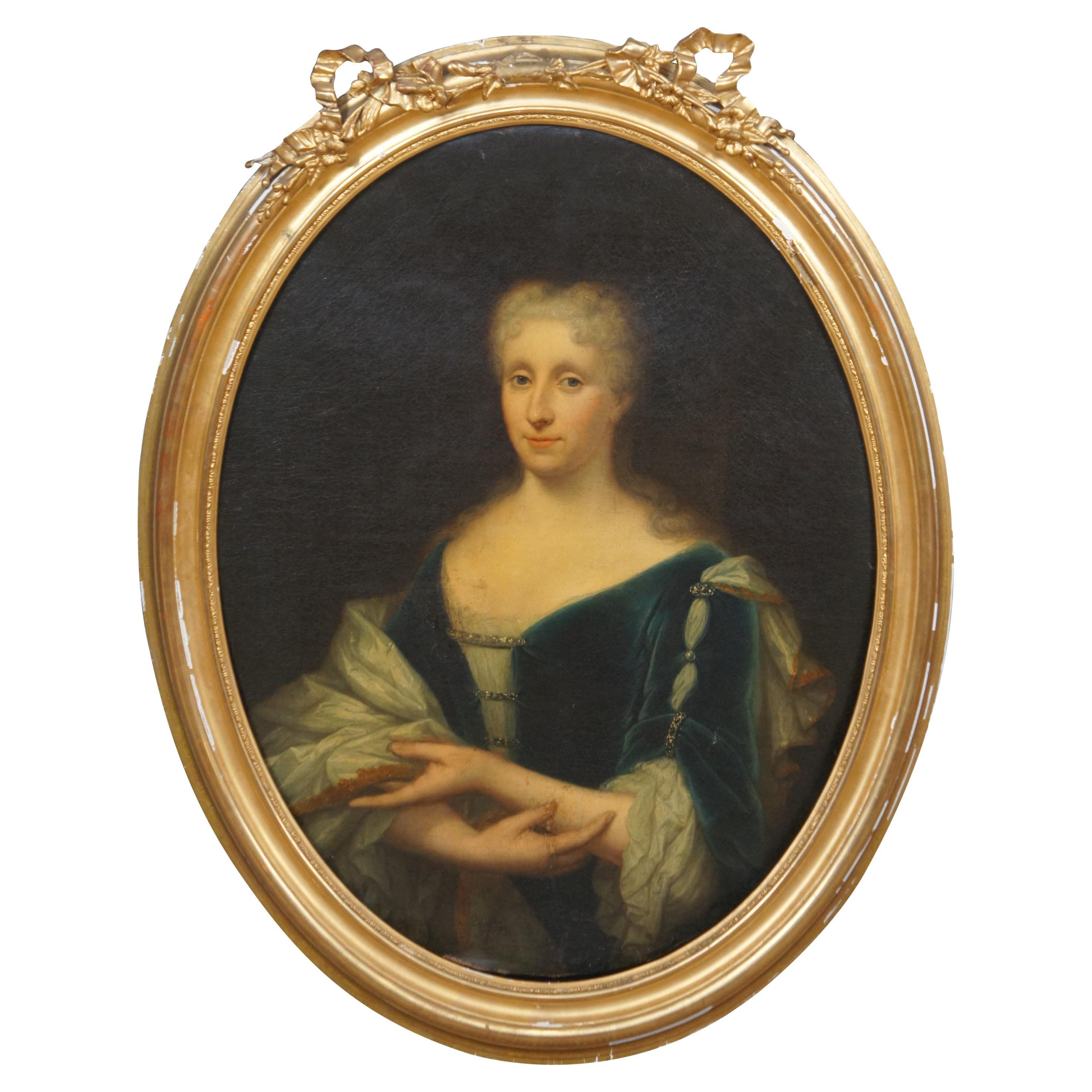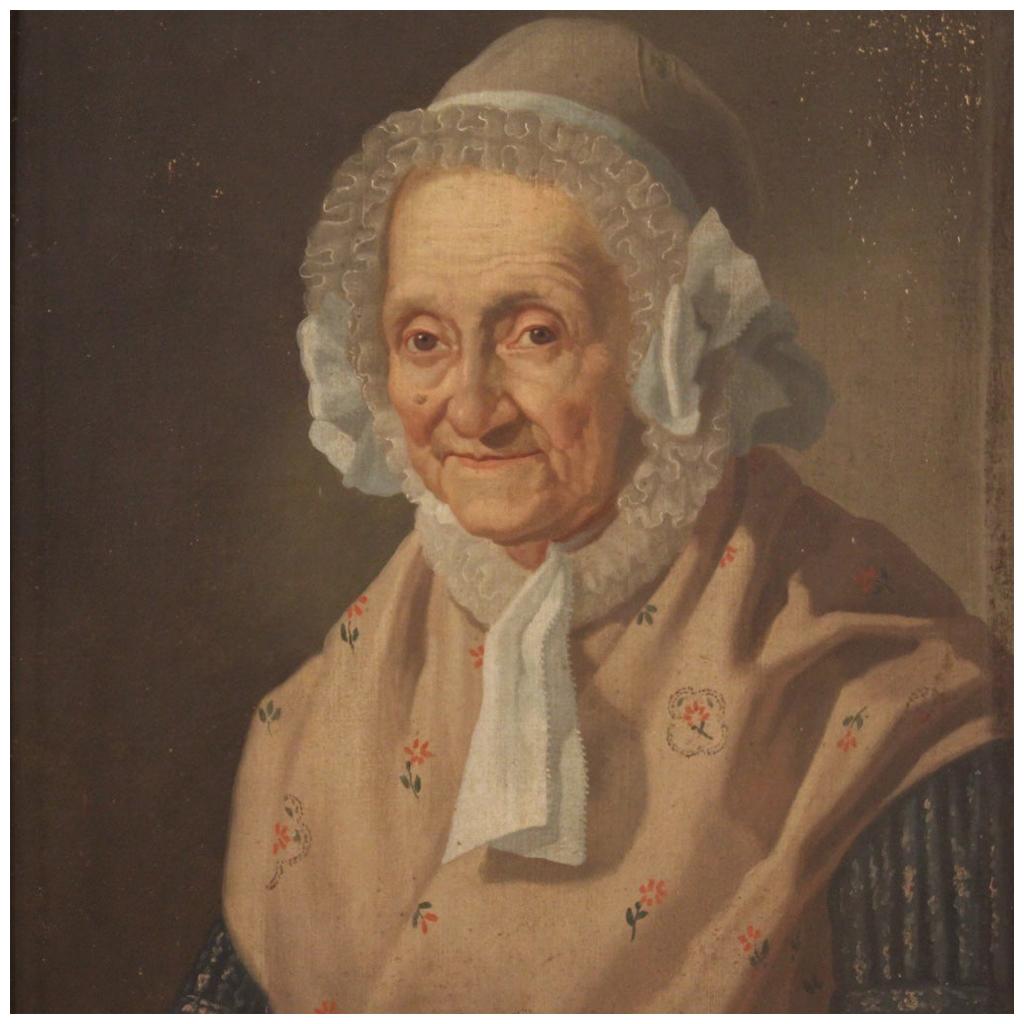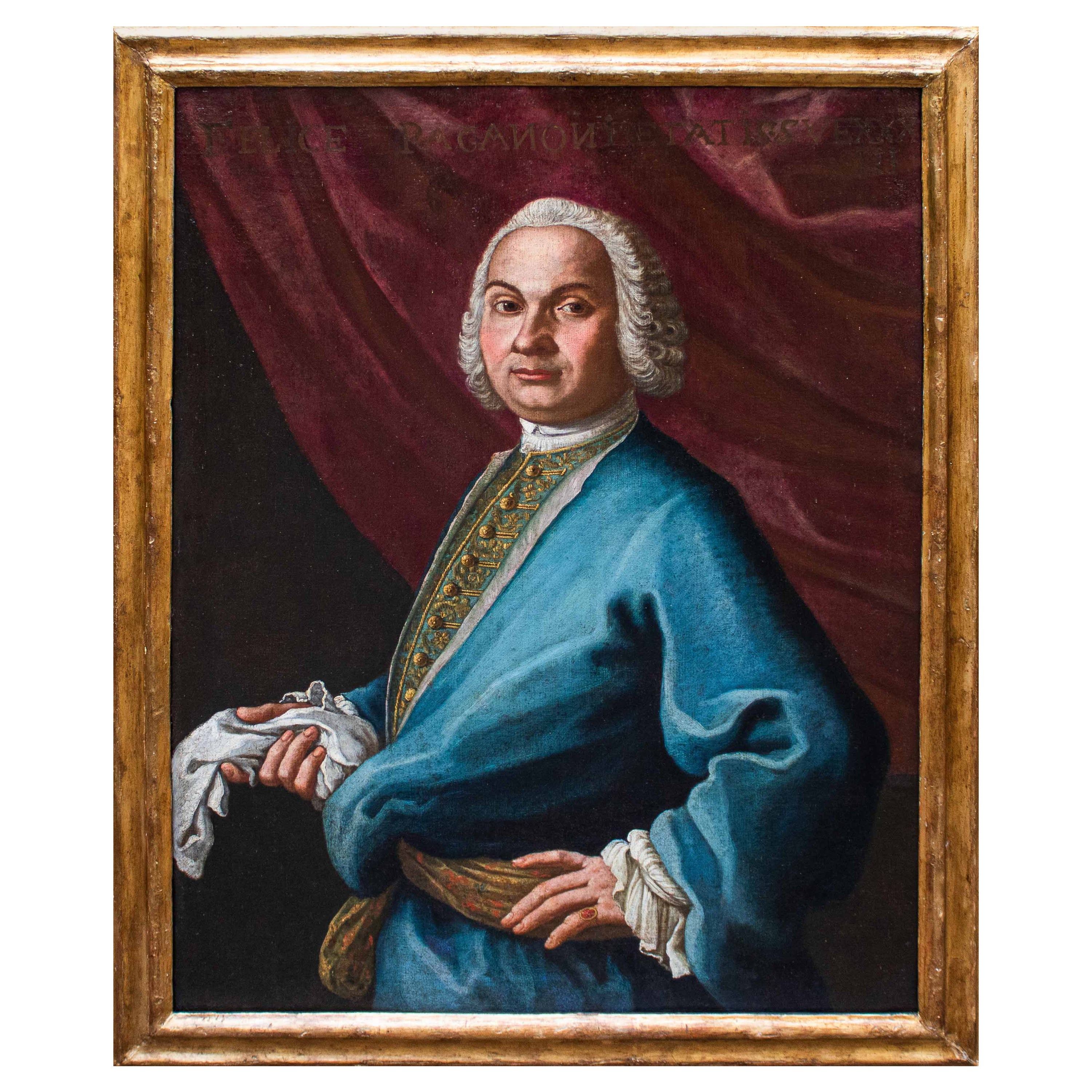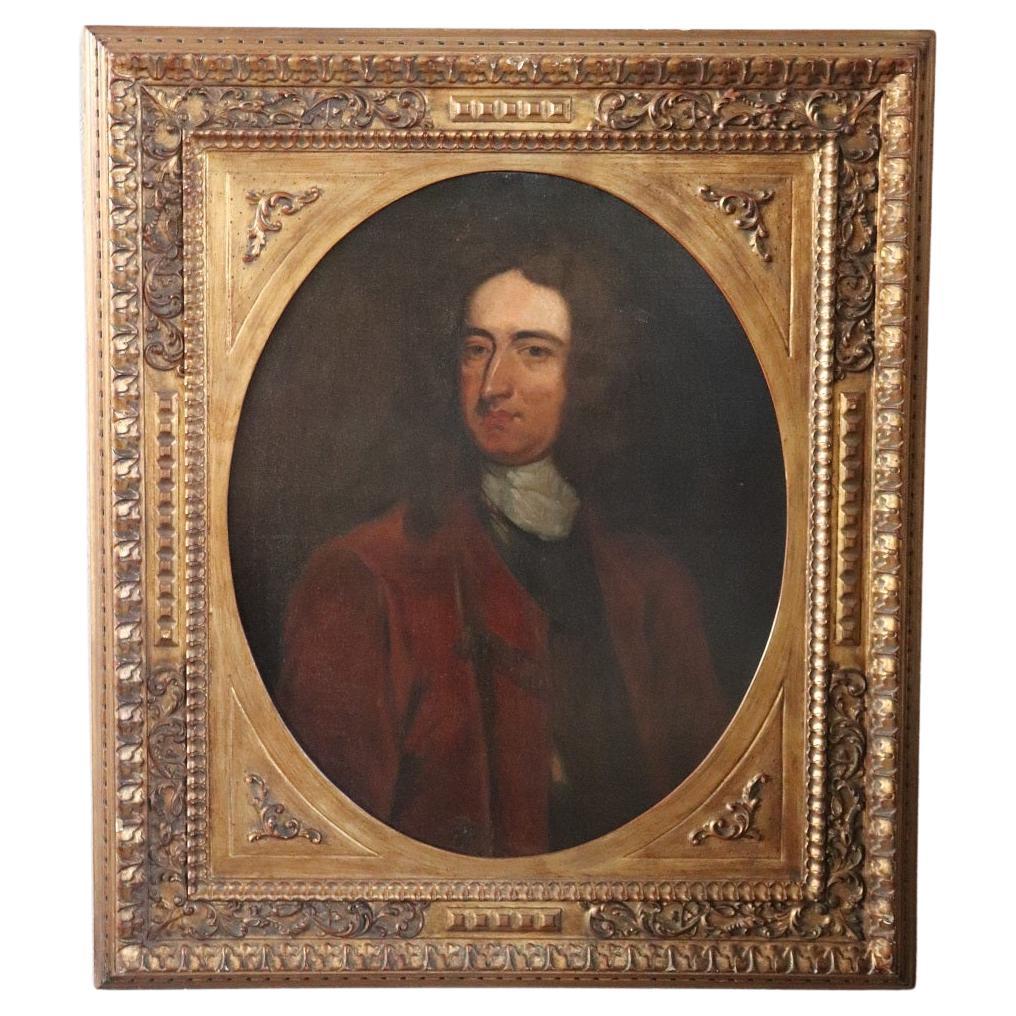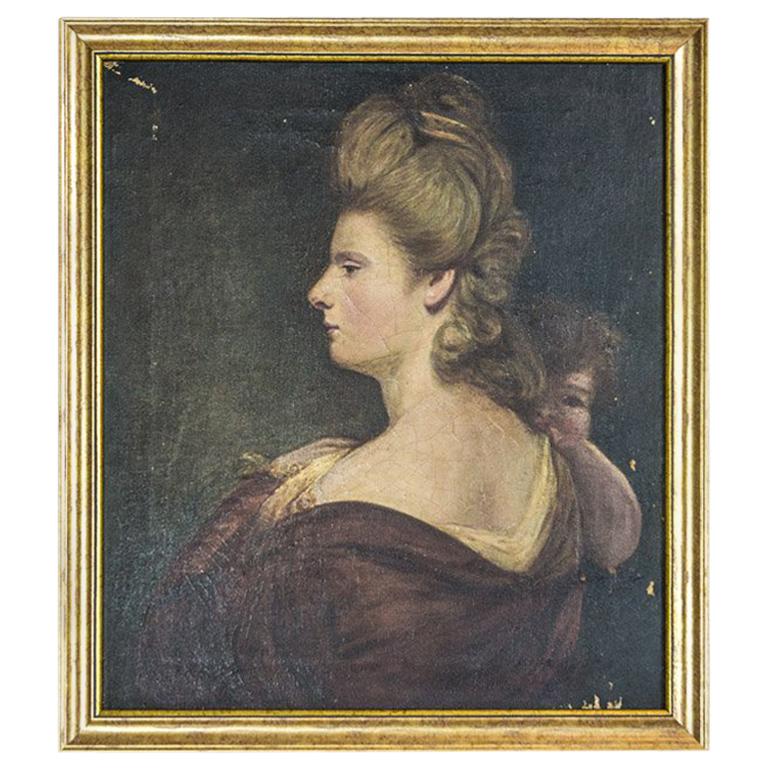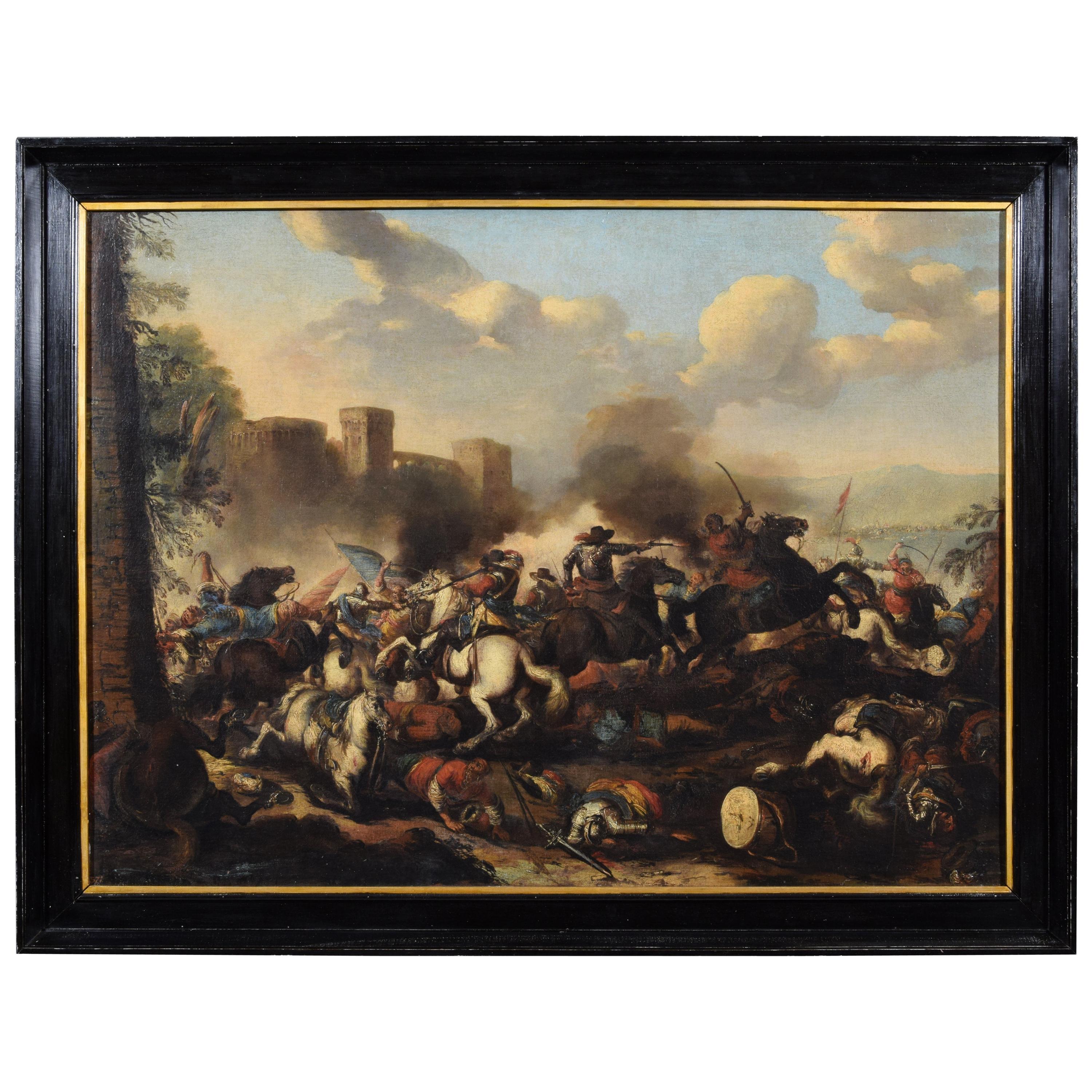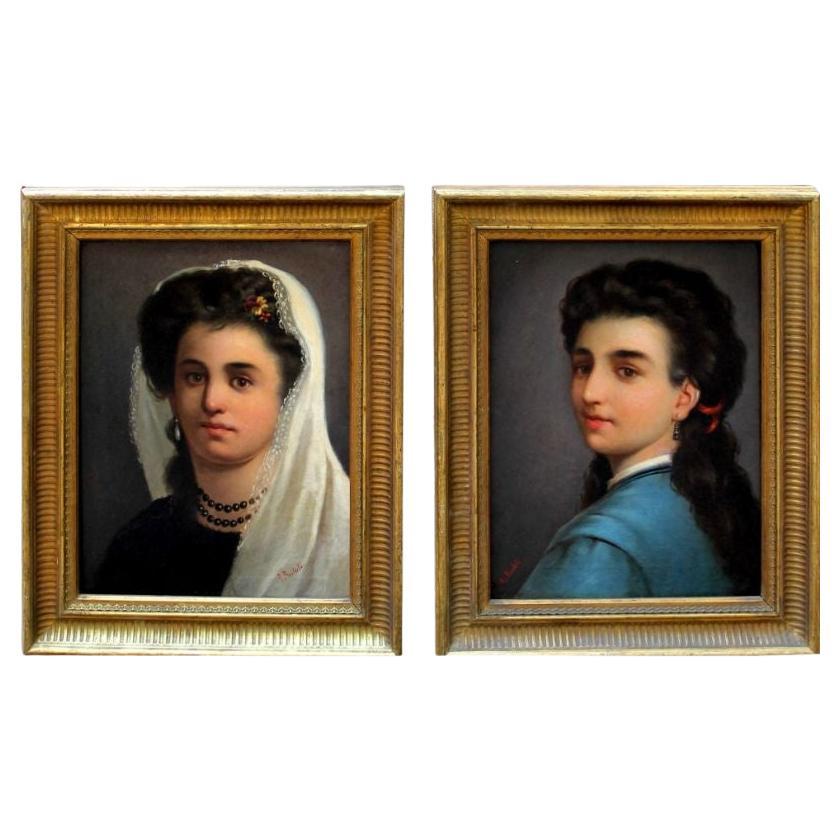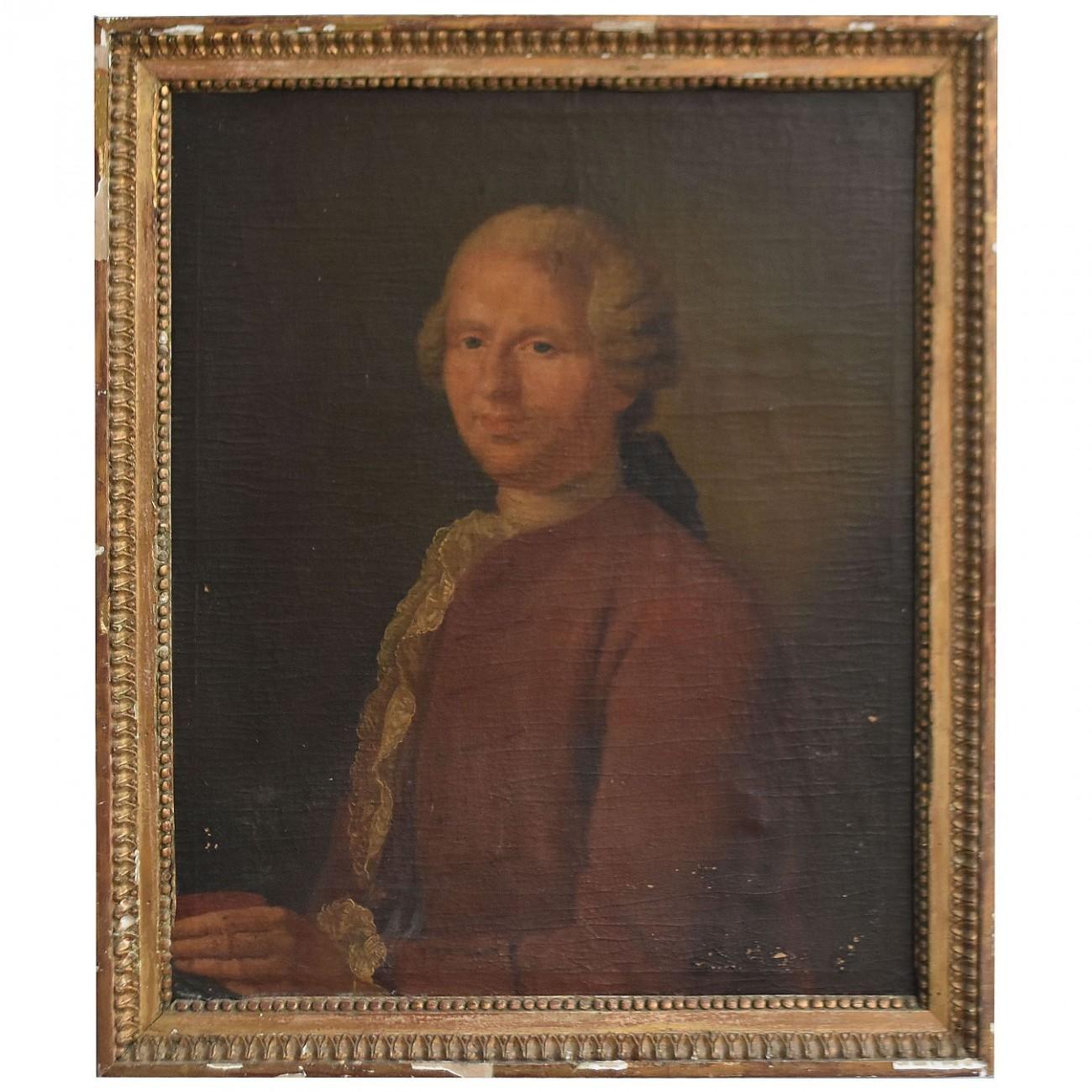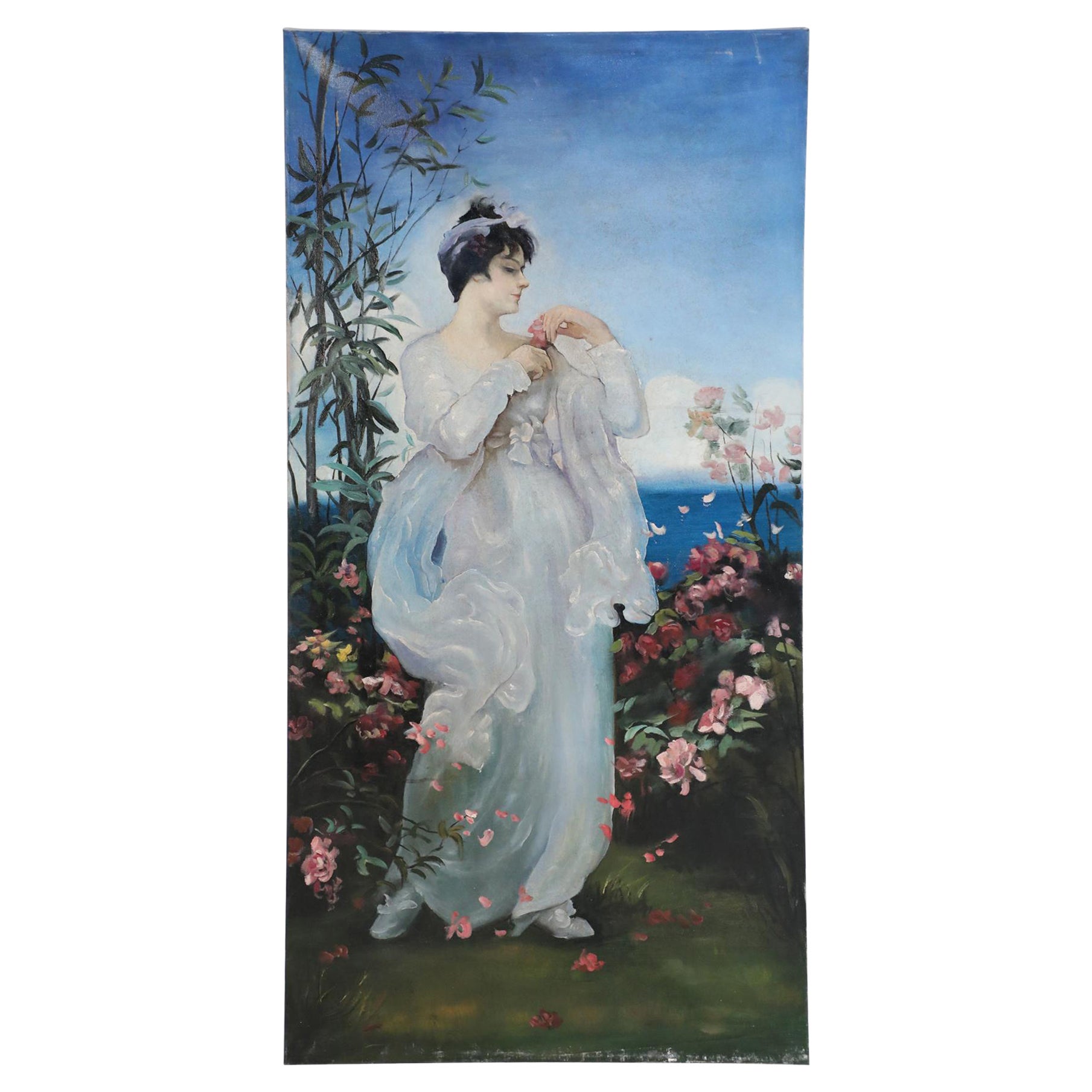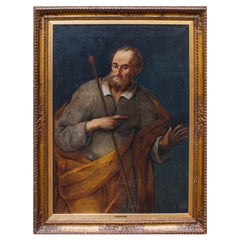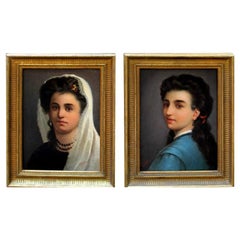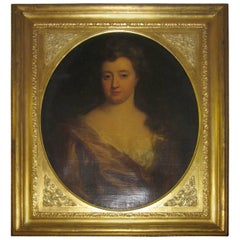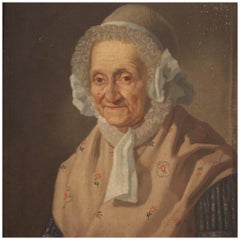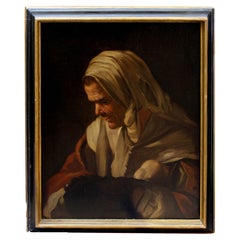
18th Century Portrait of Old Woman Painting in Oil on Canvas by Antonio Cifrondi
View Similar Items
Want more images or videos?
Request additional images or videos from the seller
1 of 6
18th Century Portrait of Old Woman Painting in Oil on Canvas by Antonio Cifrondi
About the Item
- Dimensions:Height: 29.93 in (76 cm)Width: 23.23 in (59 cm)Depth: 3.94 in (10 cm)
- Style:Rococo (Of the Period)
- Materials and Techniques:
- Place of Origin:
- Period:
- Date of Manufacture:18th Century
- Condition:Wear consistent with age and use.
- Seller Location:Milan, IT
- Reference Number:1stDibs: LU5918226766632

About the Seller
5.0
Vetted Seller
These experienced sellers undergo a comprehensive evaluation by our team of in-house experts.
Established in 2000
1stDibs seller since 2021
25 sales on 1stDibs
Typical response time: 10 hours
More From This SellerView All
- 17th Century Saint Joseph Oil on Canvas Attributed to Antonio CifrondiLocated in Milan, ITAntonio Cifrondi (1665 - 1730), Attributed Man with stick - Saint Joseph Measures: Oil on canvas, Cm 115 x 79 - With frame, cm 139 x 103 This canvas is, for stylistic and c...Category
Antique 17th Century Paintings
MaterialsCanvas
- 18th Century Portrait of Felice Paganoni Painting Oil on CanvasLocated in Milan, ITAttributed to Giacomo Ceruti (Milan, 1698-1767) Portrait of Felice Paganoni Oil on canvas, 98.5 x 73 cm With frame, 109 x 85 x 4 cm "Felice Pag...Category
Antique 18th Century Italian Paintings
MaterialsCanvas
- 18th Century Portraits of Women Couple of Paintings in Oil on Canvas by BertoliLocated in Milan, ITAntonio Bertoli (active between 1829 - 1842) Portraits of women (2) Oil on canvas, 41.5 x 31 cm With frame 52 x 42.5 cm Signed below A. Bertoli The two portraits examined here are by the hand of the artist Antonio Bertoli, a painter active in Florence between 1829 - 1842. He trained at the Florentine Academy, where in 1832 he obtained the prize for the nude in drawing. At the academic exhibitions of the following years he exhibited mainly portraits, including a representation of Nicolò Macchiavelli executed in 1837. An eclectic artist, he experimented with different genres: for the Villa Puccini di Scornio in Pistoia, in 1838, he was commissioned to create a history picture, The death of Francesco Ferrucci (Pistoia, Civic Museum), inspired by an episode of the novel Siege of Florence by Francesco Domenico Guerrazzi. Instead, two religious paintings date back to the 1840s: Christ chasing the merchants from the Temple and a Virgin Mary, In the portraits analyzed Bertoli depicts two half-length women taken from a foreshortening and a frontal in close pose, characterized by very similar Mediterranean features. In the first painting the woman, taken from the front, looks directly at the viewer. The wavy hair is decorated with a colorful violet and is partially covered by a white veil...Category
Antique 19th Century Italian Paintings
MaterialsCanvas
- 17th - 18th Century Portrait of Guy Painting Oil on Canvas by Area of AmorosiBy Antonio AmorosiLocated in Milan, ITCircle of Antonio Amorosi (Comunanza, 1660 - Rome, 1738) Portrait of young people Oil on canvas, 87 x 67 cm The painting depicting this portrait was made by an artist activ...Category
Antique Late 17th Century Italian Paintings
MaterialsCanvas
- 17th Century Portrait of a Woman Painting Oil on Canvas by Monsù BernardoLocated in Milan, ITBernard Keil known as Monsù Bernardo (Helsingør, 1624 - Rome, 1687) Portrait of a woman Oil on canvas, 67 x 48 cm - frame 78 x 62 cm Identified for the first time only starting ...Category
Antique 17th Century Italian Paintings
MaterialsCanvas
- 18th Century Cherub Head Sketch Painting Oil on CanvasLocated in Milan, ITVenetian school, 18th century Study with the head of a cherub Measures: Oil on canvas, 45.5 x 41 cm - with frame 54.5 x 49.5 cm The present qualifies as a study or preparatory sketch by virtue of the structural and figural layout; by reason of formal and substantial evidence, it can be traced back to the mature neo-Venetian style, which in the eighteenth century had begun to produce figurations of extreme typological pathetism and formal expressionism. The contemporary painting experience of Tiepolo commanded the Venetian art scene, once the lesson of Pier Francesco Mola (1612-1666) was overruled. The delicate putto head offered here, in which a cherub is recognizable due to the happy iconographic solution of the wings placed under the angel's face, is outlined with a vigorous vitalism. A foreshortened point of view illuminates his face in a grazing way, probing his features with strong shadows and with a youthful blush that orange his cheeks. The veristic perfection with which the artist arranges the semblant is of marvelous expressiveness. The eyes are swollen with intensity, and together with the general setting of the head they denounce a conscious reflection on the physiognomy, peculiar within the emerging context of Venetian painting. The painting in question is affected by the large-scale productions, both monumental and perspective, at the time in vogue in the territory of the Serenissima. Conceived through a vision from below, the portrait reveals from the Venetian Rococo that particular predilection for the open and clear, airy ways, denounced in the first instance by Tiepolo. The conscious detachment from the Cortona-style decorativism and from the repeated layout solutions then in vogue allow us to approach the present to the production of Francesco Fontebasso...Category
Antique 18th Century Italian Rococo Paintings
MaterialsCanvas
You May Also Like
- 18th century Portrait of Lady Oil on Canvas in Giltwood FrameLocated in Savannah, GAEnglish oil on canvas portrait dating from the late 1700s painted in the manor of Joshua Reynolds. We believe the giltwood frame could be the original as it is right for the period. ...Category
Antique 1790s English Rococo Paintings
MaterialsCanvas, Wood
$5,200 Sale Price20% Off - Antique 18th Century Dutch Oil Painting on Canvas Oval Portrait Seated WomanLocated in Dayton, OH"An impressive early 18th century Dutch School portrait of Carolina Cornelia De Wille, circa 1714. The oval oil painting is on canvas and feat...Category
Antique 1710s Dutch Colonial Paintings
MaterialsCanvas, Paint
- 19th Century Oil on Canvas Italian Painting Portrait of a Old Woman, 1880Located in Vicoforte, PiedmontAncient Italian painting from the late 19th century. Framework oil on canvas depicting a portrait of a pretty old woman in period clothing of good pictorial quality. Wooden frame not...Category
Antique 1880s Italian Paintings
MaterialsCanvas
- 18th Century Antique Oil Painting on Canvas Portrait of a GentlemanLocated in Casale Monferrato, ITBeautiful antique oil painting on canvas portrait of a gentleman. Excellent pictorial quality great attention to detail. English school ...Category
Antique 1780s Dutch Paintings
MaterialsCanvas
- 19th Century Painting, Oil on Canvas, A Portrait of a WomanLocated in Opole, PLWe present you this oil on canvas, circa the early 19th century, with a portrait of a lady, in profile, holding a baby on her arm. The condition of this piece of art is good. Howeve...Category
Antique Early 19th Century Paintings
MaterialsCanvas
$1,307 Sale Price20% Off - 18th Century Italian Oil on Canvas Painting with Battle by Antonio CalzaBy Antonio CalzaLocated in ITAntonio Calza (Italy, Verona, 1653-18th April 1725) "Battle between Christian and Turkish cavalry with castle" The painting depicts a bloody battle between Christian and Turkish cavalry. Characterized by dynamism, intensity of color and light, the main scene occupies the lower horizontal section of the canvas, optically interrupted by the black fumes of the shots from which emerge, on the left, the towers of a fortress. On the right, in the distance you can see the combat in progress in the countryside, beyond which you can see the pale presence of hills that create a fifth, marking the horizon. To frame the scene contributes to the left, against light and in the foreground, a portion of the wall. The painter, however, introduces a horse on the ground, of which we see only the back, a ruse to involve the observer making him become active and participate in the scene. In the foreground, lifeless bodies, wounded horses and, scattered on the ground, weapons and a drum enhance the drama of the clash. The excitement and expressive force, the intense chromatic range attentive to the conditions of light and the fine brushstrokes, decisive and dramatic, suggests the attribution to Antonio Calza, one of the most important painters of battles of the seventeenth century, excellent student and continuator of the greatest interpreter of the genre, Jacques Courtois called il Borgognone (Saint-Hyppolite 1621 - Rome 1676). Il Borgognone, although not having had a real school or direct students, places itself as a primary reference point by the Italian and foreign "battaglisti". The genre of battle painting found great success in the collections of the Italian and European nobility of the seventeenth and eighteenth centuries. The battles of the Italian Renaissance, in which the scene converged towards a precise protagonist, evolve towards a type of combat "without hero". The bloody realism of the details and the dynamic development of the narrative confuse the figure of the protagonist, when present, to give importance to the swirl of horses and armed fighters, among which, moreover, does not emerge a winner. The certain documents relating to the life and movements of Antonio Calza are scarce; it was equally difficult to reconstruct, from the critics, a catalogue of autograph works. Through paintings in private collections, in museums and paintings passed on the antiques market it has been possible to identify a copious corpus of works that can be traced back to his hand. The work of art historians, together with that of antique dealers, in conferring proper attributions in order to best outline the figure of Calza, continues but studies are still in progress. In this sense, the work of Giancarlo Sestieri should certainly be noted, who investigated the artistic production of the battaglisti and Calza, thus allowing the comparison of the numerous photographic works reported, to identify and recognize the stylistic qualities that distinguish the corpus of paintings assigned to him today. Antonio Calza was born in 1653 in Italy, in Verona and in 1664 he entered the school of Carlo Cignani in Bologna, dedicating himself to painting battles and landscapes. He then perfected in Rome, where he knew the works of the then undisputed head of the sector, Jacques Courtois called the Burgundian. In 1675 he returned to Verona and married an 88-year-old widow who, dying, left him a rich inheritance. Much appreciated by the nobility and the bourgeoisie, he received numerous commissions. Bartolomeo Dal Pozzo (Le Vite de' pittori, de gli scultori et architetti veronesi, 1718) praises "three great paintings of battles...Category
Antique Late 17th Century Italian Baroque Paintings
MaterialsCanvas
Recently Viewed
View AllMore Ways To Browse
18th French Oil Painting
18th Century Baroque Painting
18th Century French Oil On Canvas
18th Century Oil Paintings Large
Old Document
Baroque Oil Painting Large
Antique Oil Lights
18th Century Woman Portrait
18th Century Portrait Of Woman
18th Century Portrait Of A Woman
Fur Men
18th Century Oil Painting Woman
Men Fur
Mens Fur
Mens Furs
Men Furs
Italian Rococo Painting
Brescia Italy


